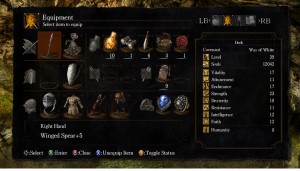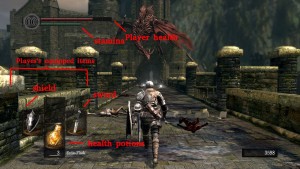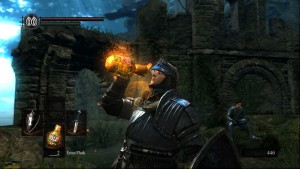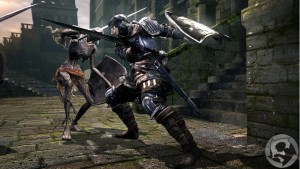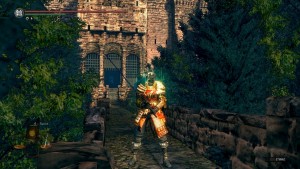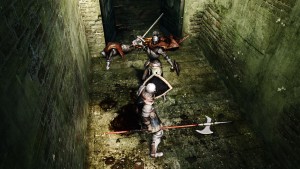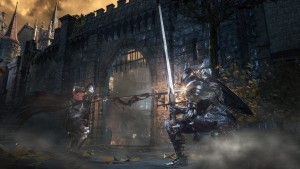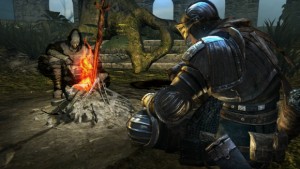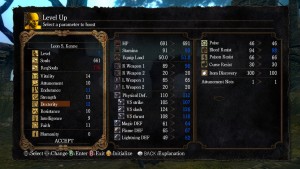So far I have touched on some basic topics in Dark Souls that a rookie or unaware potential player could use in order to increase his chances at survival in the dismal virtual world. The main takeaway besides the technological aspects of strategy and gameplay knowledge is persistence! Any video game, from the very beginning of its creation to modern day games takes persistence in order to conquer new obstacles. With persistence, any game can be beaten with time, patience, and maybe a helpful guide to help lessen the mystery.
The main topic overviews cover combat strategies, items, gear sets and weapons, non-player characters, and online interactions.
With combat strategies, timing is everything. Watching your player’s stamina is crucial in order to block attacks and recharge stamina quicker; it’s the easiest way to dispose of a tough enemy that can’t be defeated in a couple of hits. Know the enemy! Observe and watch the attack patterns and learn how to dodge and time your attacks perfectly. Practice makes perfect! Every time you die, you have more knowledge against your opponent and a better chance to do better next time!
The items in the game can help aid the player’s progress throughout areas with differing ailments. The estus flask is the most important item, as it holds the healing liquid, estus, to replenish the player’s health. The other items can help cure ailments from creatures or environment threats, such as poison or bleeding. Collecting, searching, or buying loot is good for when these situations arise so the player can be most prepared. Also, reading up on the various types of items not mentioned in my guide may help the player in unique situations. Any Dark Souls wiki would have an exhaustive list of the several items scattered throughout the world and what their uses are.
Gear sets and weapons are an important aspect of gameplay that can effect character classes in various ways. Choosing what kind of armor to wear can make the difference between being quick and stealthy or playing like a tank, pummeling any creature in your wake. It would be helpful to have an idea in mind before choosing a character class, but stats can be tailored as the player levels up, so it isn’t absolutely necessary. Heavier armor takes more strength to wear and walk around in, whereas lighter armor does not.
Non-player characters, or NPCs, can immerse the player in the other faceted stories in the world of Dark Souls. Each NPC has a unique storyline that is only accessible by talking or interacting with the character, more often than not, repeatedly throughout the game and in different locations. By doing this, the player can gain the aid of certain special NPCs in boss bottles in the game, a huge plus since they can be extremely challenging.
Lastly, online interactions in the game can help the player feel less alone in the world, even when playing a single player campaign. Hints throughout the areas can help warn a player of enemies or hint toward hidden loot. Some also enjoy the PvP aspect of the game, inviting or invading other players to test their skill against another human.
Hopefully this leads some insight into the world of Dark Souls and makes its reputation a bit less dismal to those un-knowledgeable or too afraid to attempt it before.
